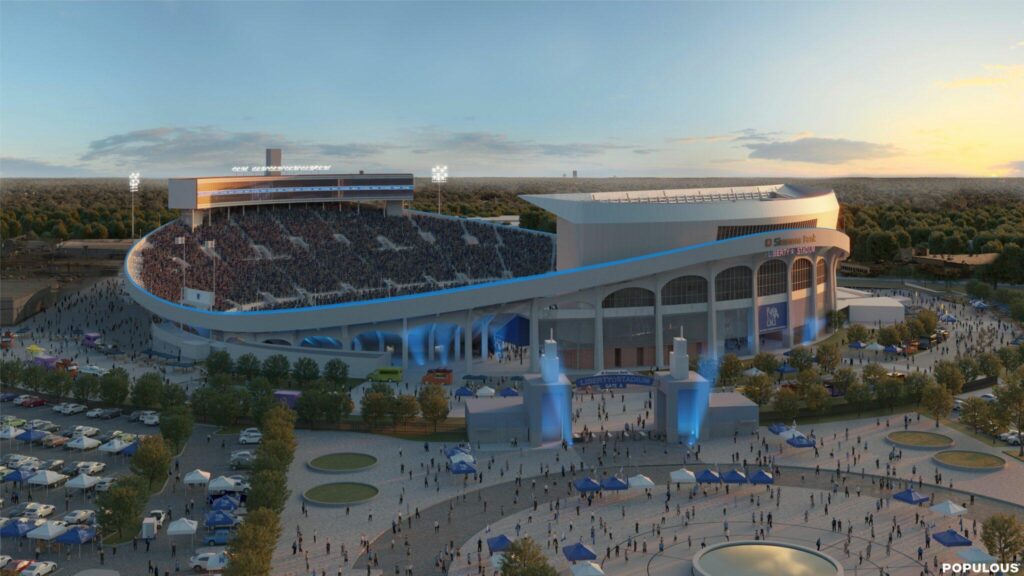: A New Era for Sports Venues
In an era where fan experience and technological advancements are paramount, the sports industry is witnessing a remarkable wave of transformative stadium renovations and new developments across the globe. From the gleaming new facades of multisport arenas to expansive renovations that breathe new life into historic venues, these initiatives are setting a new standard for engagement, accessibility, and sustainability in the world of sports. As teams and municipalities collaborate to create state-of-the-art facilities, this article explores the latest trends in stadium design and renovation, highlighting groundbreaking projects that aim to redefine how fans interact with thier favorite sports. With a keen focus on innovation and community integration, these developments promise not only to enhance game-day experiences but also to serve as vibrant hubs for local connectivity and economic growth. Join us as we delve into this fascinating evolution of sports venues reshaping the landscape of athletic entertainment.
Table of Contents
- Stadium Upgrades Redefining Fan Experience and Engagement
- Innovative Architectural designs Shaping the Future of Sports Venues
- Sustainable Practices Driving Eco-Friendly Renovations
- Economic Impacts of Modernized Stadiums on Local Communities
- Final Thoughts
Stadium Upgrades Redefining fan Experience and engagement
The latest renovations sweeping through stadiums across the nation are redefining how fans engage with their favorite teams.These upgrades focus not only on improved aesthetics but also on enhancing overall functionality and comfort. Modern designs now incorporate state-of-the-art technology, resulting in seamless connectivity with high-speed Wi-Fi and mobile charging stations readily available. Fans can also enjoy interactive kiosks that allow for real-time stats, player information, and even the ability to order food from their seats, creating an immersive atmosphere that keeps spectators connected to the game like never before.
With the introduction of innovative seating options, such as recliners and social spaces, spectators can choose from a variety of environments that cater to any mood, whether they prefer a lively party zone or a more relaxed viewing experience
Innovative Architectural Designs Shaping the Future of Sports Venues
As the demand for immersive experiences grows, architects are reimagining sports venues to be more than just places for competition. Adaptive reuse has become a popular approach, allowing older stadiums to retain historic charm while integrating modern technology. This blend ensures that fans enjoy enhanced amenities such as virtual reality experiences, interactive zones, and eco-friendly designs that promote sustainability. Notable enhancements include:
- Smart seating arrangements that optimize views and comfort
- Dynamic LED lighting systems that adjust to events
- green roofs and walls featuring native vegetation
Simultaneously occurring, new developments are pushing the envelope even further. The latest stadium concepts incorporate multi-use facilities, fostering community engagement beyond just game days. With features like open-air markets, concert venues, and wellness centers, these designs aim to make stadiums a hub of activity year-round. A comparison of some key recent projects highlights these innovations:
| Stadium | Location | Key Feature |
|---|---|---|
| SoFi Stadium | Los Angeles,CA | Adjustable roof for climate adaptability |
| Allegiant Stadium | Las Vegas,NV | Transparent retractable doors for natural ventilation |
| Tottenham Hotspur Stadium | London,UK | Double-sided pitch for soccer and NFL games |
Sustainable Practices Driving Eco-Friendly Renovations
In the realm of modern stadium renovations,a paradigm shift towards sustainability is emerging as a driving force behind eco-friendly development projects. Architects and designers are now prioritizing sustainable materials and energy-efficient technologies, seamlessly blending performance with environmental obligation. Significant attention is given to reclamation and recycling, allowing for the reuse of materials from existing structures, which not only reduces waste but also preserves historical elements of the original designs. Key initiatives include:
- Green Roofs: Enhancing biodiversity and reducing heat absorption.
- Solar Energy Systems: Harnessing renewable energy to power facilities.
- Water Management Systems: Implementing rainwater harvesting and recycling methods.
Moreover,stakeholder engagement in sustainable practices fosters community involvement and clarity,ensuring that the development process aligns with local environmental goals. As part of the renovations, several projects are adopting smart technology solutions that integrate energy usage monitoring and automated systems to optimize resource consumption. The table below illustrates some of the innovative features being adopted across various stadiums:
| Stadium | Eco-Friendly Features |
|---|---|
| Greenfield Stadium | Recycled Steel Structure, Rain Gardens |
| Lakeside Arena | LED Lighting, Solar Panels |
| Eco Dome | Wind Turbines, Greywater Recycling |
Economic Impacts of Modernized Stadiums on Local Communities
The renovation and modernization of stadiums extend beyond just improving the fan experience; they serve as powerful engines of economic growth within local communities.Investment in these facilities frequently enough leads to job creation, both during the construction phase and in ongoing operations.Local contractors,suppliers,and service providers can benefit significantly from such projects. Moreover, stadiums can boost tourism, as they attract events, concerts, and sports competitions that draw visitors from outside the area, amplifying spending in hotels, restaurants, and retail shops.
As communities embrace new stadium developments, they frequently observe a surge in public-private partnerships aimed at revitalizing surrounding areas. This can result in the development of entertainment districts, parks, and recreational facilities that enhance the quality of life for residents. Furthermore, modernized stadiums often incorporate sustainability initiatives and green spaces, transforming neighborhoods into more appealing places to live and work. The impact can be quantified in various ways, including increases in property values and improvements in public infrastructure, fostering a vibrant local economy.
Final Thoughts
As the landscape of sports and entertainment evolves, the wave of transformative stadium renovations and new developments signals a promising future for fans, athletes, and communities alike. These aspiring projects not only enhance the spectator experience but also prioritize sustainability, accessibility, and technological advancements, setting new benchmarks for the industry. As we look ahead, it is clear that the investment in these venues reflects a commitment to fostering engagement, driving economic growth, and creating vibrant environments that resonate with diverse audiences.The unveiling of these groundbreaking initiatives not only marks a new chapter in the world of sports but also underscores the crucial role that state-of-the-art facilities play in shaping modern culture. As communities rally behind their teams and venues, we can anticipate a renaissance in how we experience the excitement of live sports and entertainment in the years to come.





